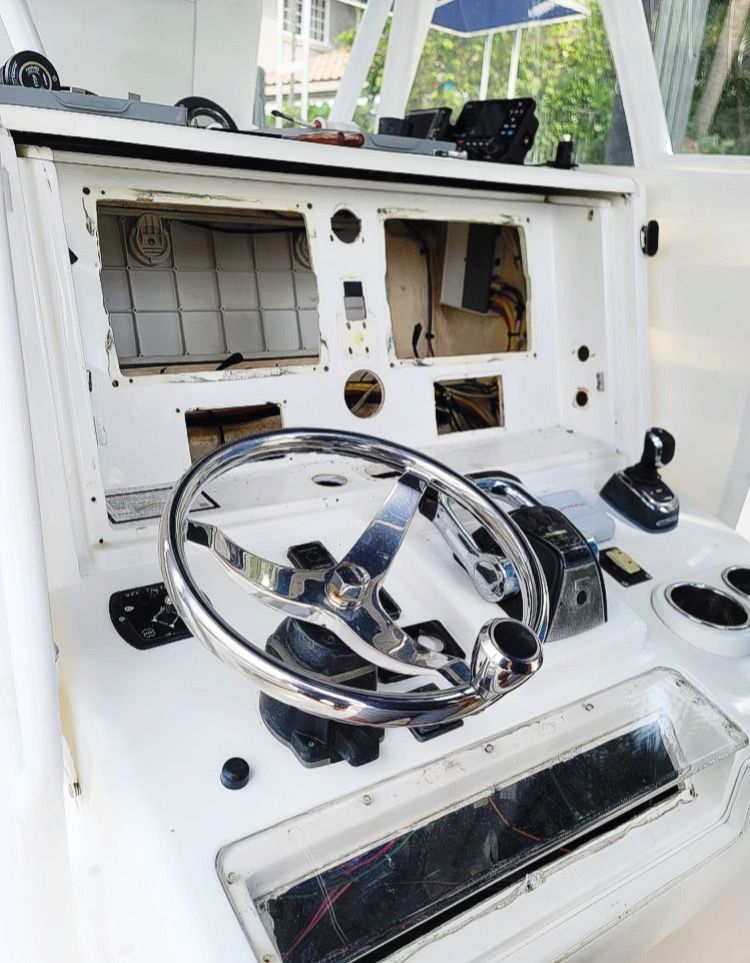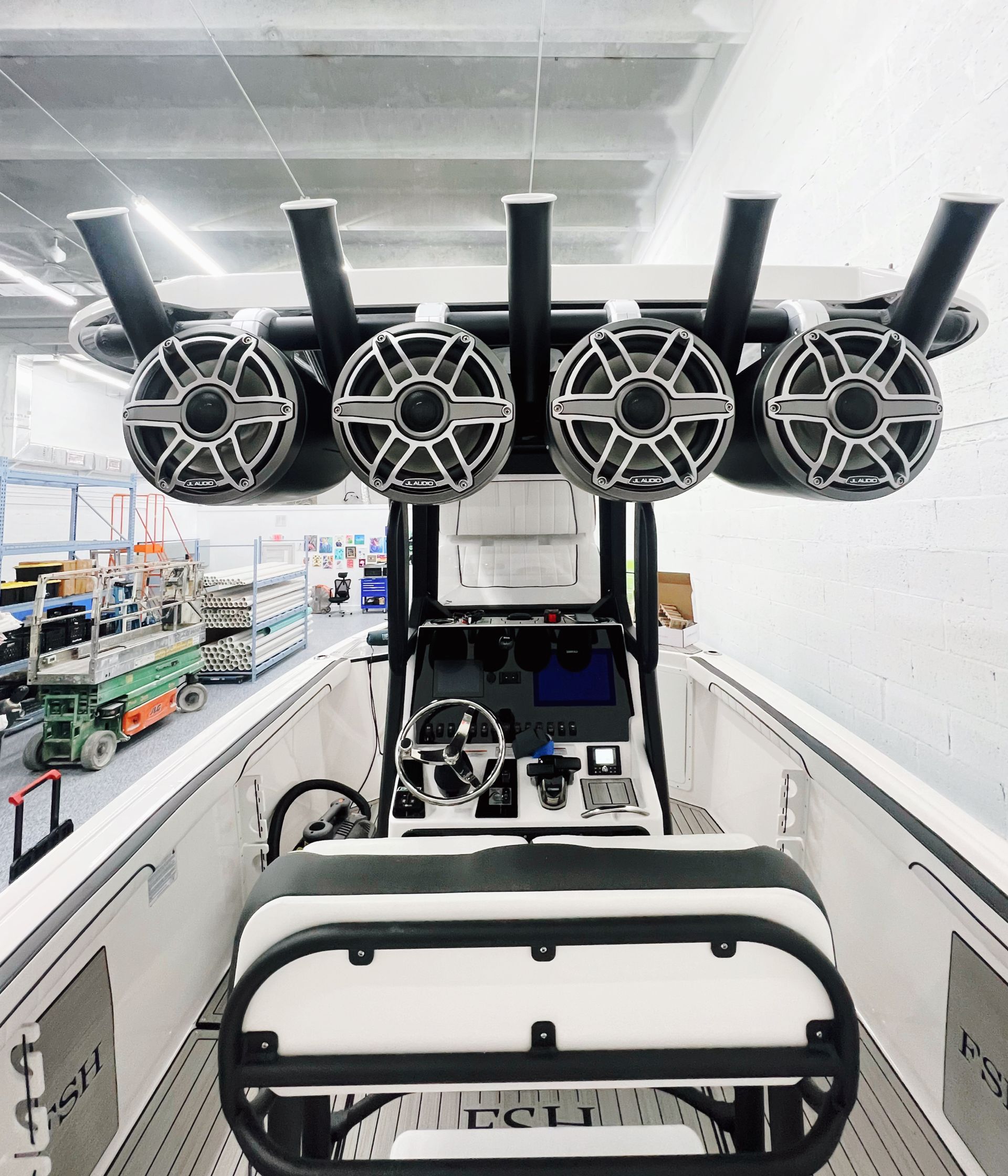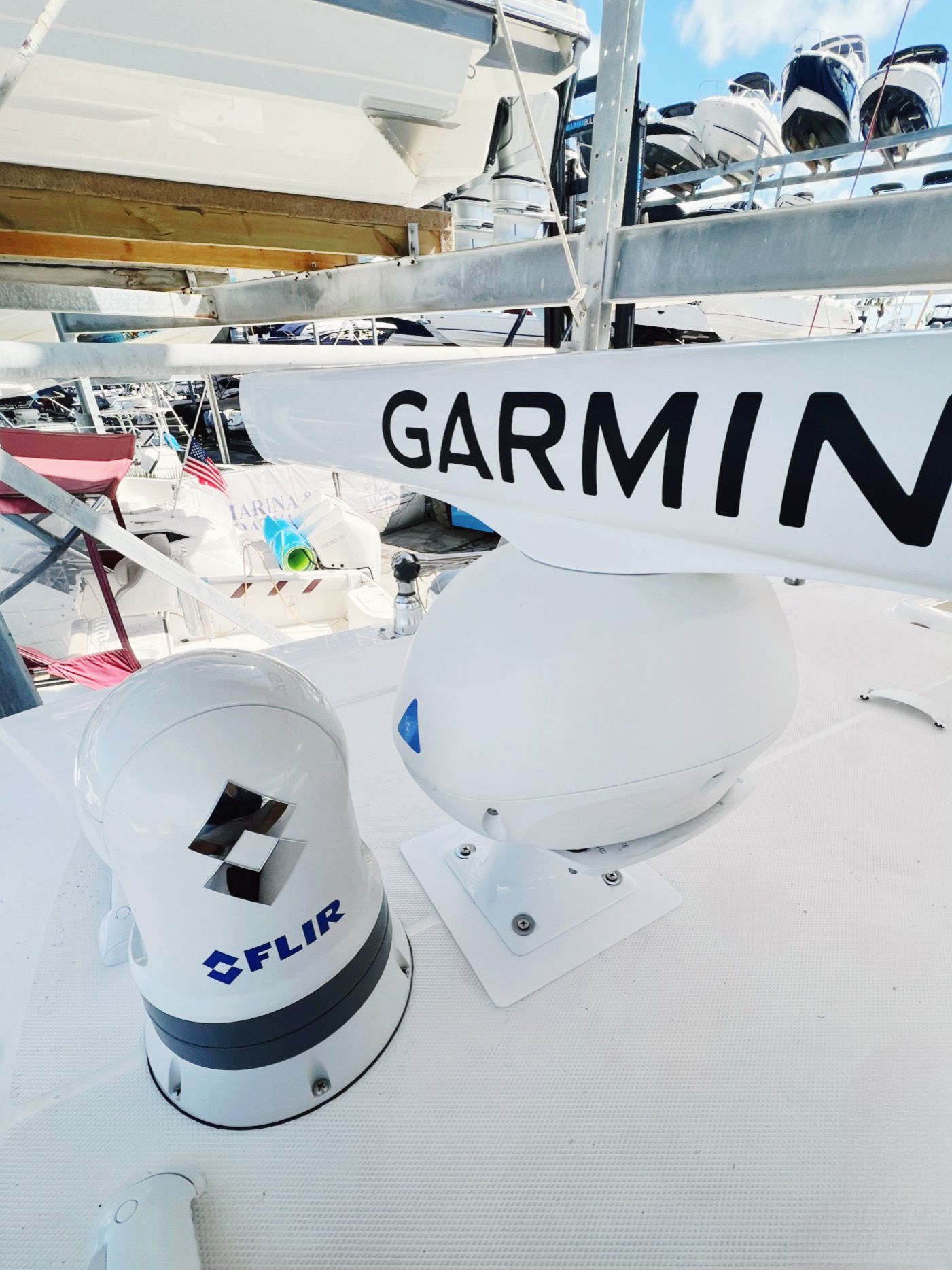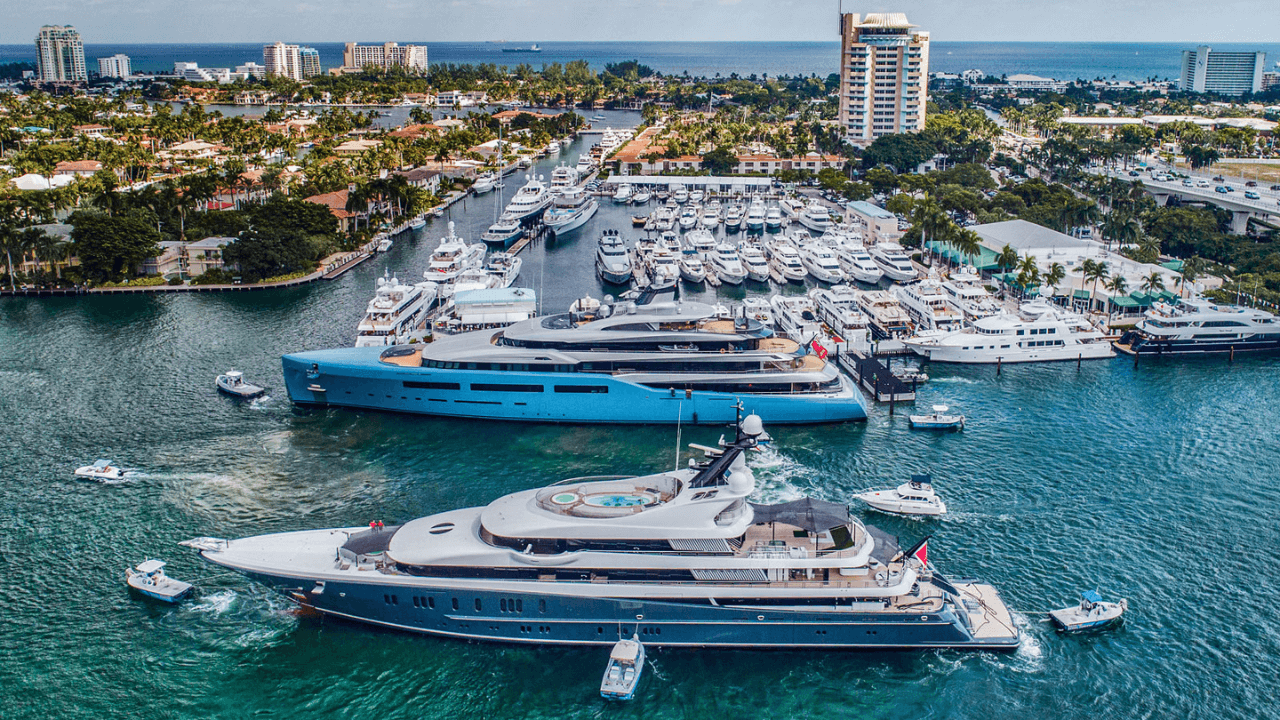7 Marine Communication Systems Essentials (2023)
Marine Tech Miami • May 13, 2023
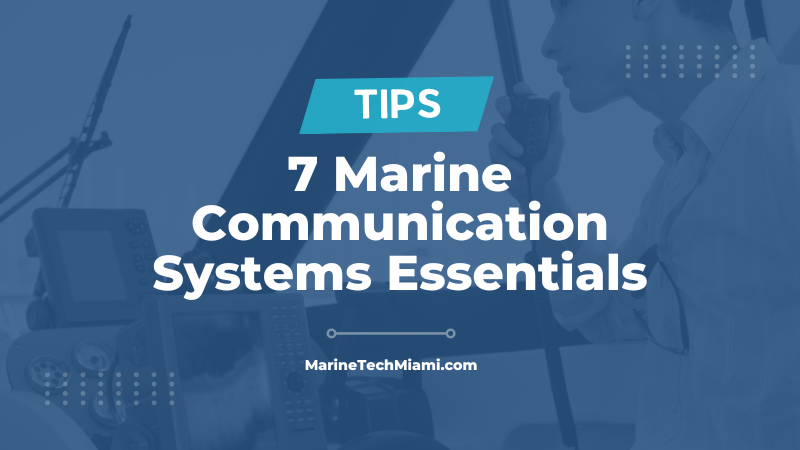
Marine communication systems are essential for maintaining the safety and efficiency of vessels at sea.
They enable ship-to-ship, ship-to-shore, and onboard communication, allowing for effective coordination and management of maritime operations.
These systems are also fundamental for distress signaling, search and rescue operations, and overall maritime security.
This article explores seven essential components of marine communication systems, their functions, and their importance in ensuring reliable and efficient communication at sea.
1. VHF Radios
Very High Frequency (VHF) radios are an indispensable communication tool for marine operations.
These radios operate within the 156-162 MHz frequency range, enabling short-range communication between vessels, as well as between ships and shore stations.
VHF radios are crucial for safety at sea, as they facilitate communication in emergency situations, enable navigation assistance, and support search and rescue operations.
Additionally, VHF radios are used for routine communication and coordination among vessels, helping to maintain order and prevent collisions in busy waterways.
2. MF/HF Radios
Medium Frequency (MF) and High Frequency (HF) radios are essential for long-range marine communication.
They operate within the 1.6-30 MHz frequency range, allowing for communication over hundreds or even thousands of miles.
MF/HF radios are particularly useful for vessels that operate in remote areas or open ocean, where VHF coverage may be limited or unavailable.
These radios facilitate ship-to-ship and ship-to-shore communication, weather updates, and distress signaling.
They also support digital selective calling (DSC), which enables the automated transmission of distress alerts and routine communication.
3. Satellite Communication Systems
Satellite communication systems provide reliable and global communication coverage for vessels at sea.
These systems utilize geostationary or low-earth orbit satellites to enable voice, data, and internet connectivity for maritime operations.
Satellite communication systems are crucial for vessels navigating remote areas or undertaking long voyages, as they provide an essential communication link when other systems are unavailable.
Additionally, satellite communication systems support vessel tracking, remote monitoring, and weather data access, contributing to the safety and efficiency of maritime operations.
4. AIS (Automatic Identification System)
The Automatic Identification System (AIS) is a vital marine communication tool that enhances navigational safety and efficiency.
AIS is a transponder-based system that allows vessels to share real-time information about their position, course, speed, and other relevant data with nearby ships and shore stations.
This information helps mariners to identify and track other vessels, assess potential collision risks, and make informed navigational decisions.
AIS is mandatory for most commercial vessels and is highly recommended for recreational boats, as it significantly contributes to maritime safety and situational awareness.
5. EPIRBs (Emergency Position Indicating Radio Beacons)
Emergency Position Indicating Radio Beacons (EPIRBs) are life-saving devices that are an essential component of marine communication systems.
EPIRBs are designed to transmit distress signals and provide accurate location information in the event of an emergency at sea.
When activated, an EPIRB sends a signal to the international search and rescue satellite system (COSPAS-SARSAT), which then relays the information to local rescue authorities.
EPIRBs are mandatory for commercial vessels and are strongly recommended for recreational boats, as they significantly increase the chances of survival and rescue in emergency situations.
6. SARTs (Search and Rescue Transponders)
Search and Rescue Transponders (SARTs) are vital marine communication tools that aid in the detection and rescue of vessels in distress.
SARTs are designed to be activated in emergency situations, emitting a signal that can be detected by nearby vessels or aircraft equipped with radar.
When detected, the SART's signal appears on the radar screen as a series of dots, guiding rescuers to the precise location of the vessel in distress.
SARTs are mandatory for commercial vessels and are recommended for recreational boats, as they significantly enhance search and rescue efforts in emergency situations.
7. Marine Weather Services
Access to accurate and timely weather information is crucial for safe and efficient navigation at sea.
Marine weather services, such as weather forecasts, warnings, and real-time observation data, are essential components of marine communication systems.
These services enable mariners to make informed decisions about their route planning, speed adjustments, and overall vessel management, helping to minimize the risks of adverse weather conditions.
Weather information can be accessed through various means, including VHF radios, MF/HF radios, satellite communication systems, and dedicated weather receivers.
What is the range of VHF marine radios, and can it be extended?
The typical range of VHF marine radios is approximately 5 to 30 miles, depending on various factors such as antenna height, radio power, and environmental conditions.
While it is not possible to extend the range significantly, using a higher-quality antenna and ensuring optimal positioning can help maximize the radio's performance within its range limitations.
How can I ensure that my marine communication equipment is functioning correctly?
Regular maintenance and testing of your marine communication equipment are essential to ensure its proper functioning.
This includes checking for any physical damage, ensuring that all connections are secure, and testing the equipment for proper operation.
Additionally, it is crucial to stay up-to-date with any software updates, service bulletins, or recalls issued by the manufacturer.
Are there any licensing requirements for using marine communication systems?
Licensing requirements for marine communication systems vary depending on the country and the specific equipment being used.
For example, in the United States, VHF marine radio users are generally not required to have a license, while MF/HF radio users must obtain a license from the Federal Communications Commission (FCC).
It is essential to familiarize yourself with the licensing requirements in your country and ensure compliance to avoid potential fines or penalties.
Can I use my marine VHF radio on land?
Marine VHF radios are designed specifically for maritime use and should not be used on land.
Using a marine VHF radio on land may cause interference with other communication systems and is generally prohibited by law in most countries.
What is the difference between an EPIRB and a PLB (Personal Locator Beacon)?
Both EPIRBs and PLBs are emergency devices designed to transmit distress signals and location information to search and rescue authorities.
The primary difference between the two is their intended use.
EPIRBs are intended for maritime use and are designed to float in water, while PLBs are designed for personal use in various environments, including land and aviation.
PLBs are typically smaller and more portable than EPIRBs but may have a shorter battery life.
How often should I replace my EPIRB or SART battery?
EPIRB and SART batteries should be replaced according to the manufacturer's recommendations, which is typically every 5 to 10 years.
It is essential to check the battery expiration date on your device and ensure timely replacement to maintain the device's effectiveness in an emergency situation.
Can I use a smartphone or tablet for marine communication?
While smartphones and tablets can be used for certain marine communication tasks, such as accessing weather information or using navigation apps, they should not be relied upon as the primary means of communication at sea.
Dedicated marine communication systems, such as VHF radios and satellite communication systems, are specifically designed to provide reliable and effective communication in the maritime environment.
Conclusion
Marine communication systems are fundamental to the safety and efficiency of maritime operations.
By understanding and utilizing the seven essential components outlined in this article – VHF radios, MF/HF radios, satellite communication systems, AIS, EPIRBs, SARTs, and marine weather services – mariners can ensure reliable communication, effective coordination, and enhanced situational awareness at sea.
Investing in these communication tools and staying up-to-date with the latest technological advancements is crucial for maintaining the highest levels of safety and efficiency in the ever-evolving maritime industry.
Contact Us
Contact Us
Recent Posts
CONTACT US
Looking to upgrade your marine electronics?
With more than 25 years of experience, we can help you get started today!

